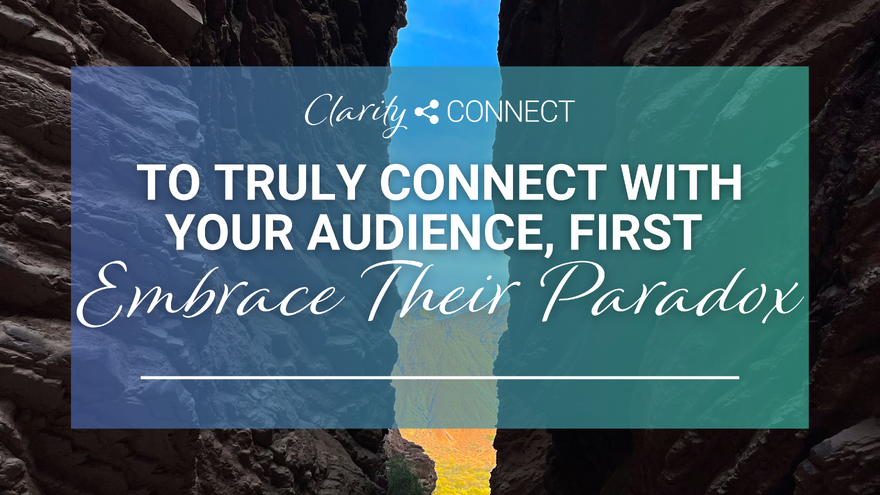
Parker J. Palmer is one of my heroes. I’ve followed his work as an educational and community activist for about 10 years now, and never has it seemed more relevant, especially for knowledge mobilizers.
Palmer, who is now 86 and still going strong, has spent his career advocating for repairing the broken ways we educate our children, engage with one another, and structure our communities.
I recently completed a facilitation program through the organization Palmer has established to spread his philosophy and methodology, the Center for Courage and Renewal. This gave me the opportunity to experience first-hand some of the teaching techniques I’d been reading about and trying to implement for years. It also reminded me of one of Palmer’s most transformative concepts: the Tragic Gap.
Occupying the place of paradox
According to Palmer, most of us find ourselves dangling lost and confused between two extreme views of the world. On the one hand, when we consider the chaos, inequity, and outright evil happening before our eyes, we can easily fall into jaded hopelessness. On the other hand, those of us who want to believe in a better way can just as easily slide to the other end of the spectrum and become Pollyannas, idealists brim full of a false optimism that helps no one but ourselves.
Both positions freeze us in a state of inaction. The key to breaking free from the human tendency to inertia is to consciously occupy the space “between corrosive cynicism and irrelevant idealism.”[1] That’s the space Palmer calls “the Tragic Gap,” and it’s where we have the ability to make choices and take action.
Standing in the Tragic Gap feels uncomfortable and uncertain—and yet as knowledge mobilizers that’s often exactly where we need to meet our audience. Because that’s where you’ll find most of the change-makers who are interested in the potential of your research and willing to help you achieve your research mission.
How awareness of paradox changes communication
We humans live most of our lives in a state of paradox, balancing two seemingly contradictory truths. Take, for example, these scenarios:
- A single mom wants to buy organic food to help heal the planet, and she can’t afford it.
- A small business owner wants to hire newcomers, and he doesn’t have the resources to invest in the communication training they’d need.
- A healthcare practitioner wants to promote food as medicine, and they don’t have time to teach nutrition.
- A civil servant wants to fund a school breakfast program, and they also need to fund infrastructure improvements just to keep schools operational.
- A city councilor wants to end homelessness, and they need to look out for their constituents, who feel threatened by a shelter proposed for their neighborhood.
The big mistake most of us make is thinking that persuasion means teaching someone the reasons to change their point of view. In reality, it starts with acknowledging how complex their world is and how tough it is to formulate anything like a unified perspective on it.
When we acknowledge the Tragic Gap, we stop being didactic and start engaging audiences in genuine conversation.
We stop thinking things like, “They should do such-and-such” or “They should trust the data.”
Instead, we start asking questions like, “I wonder what’s holding them back from endorsing this plan” or “I wonder what it’s like to be an early-career policy analyst on this file.”
One of the mantras of folks who embrace Palmer’s philosophy is “turn to wonder.” When faced with the paradoxes that make life so challenging, wonder isn’t always our first reaction because it takes effort. Nonetheless, wonder is the key to seeing through your audience’s eyes and communicating ideas in ways that feel accessible and nonthreatening to them.
How comfortable are you with paradox?
I’d encourage you to take a few minutes today and reflect on the motivation behind your latest KMb communications. What’s the drive behind them? What’s the tone?
Are you telling people what to do, assuming their choices are simple? Or are you letting people know that you see the paradoxes they’re living within and want to explore those with them?
The first approach seems the most straightforward, and it may get you short-term wins, which may or may not stick.
The second approach takes more thought and persistence, and it leads to genuine relationships, lasting trust, and long-term collaborations. When you acknowledge the Tragic Gap your audience is standing in, you create space for real transformation to happen.


Comments